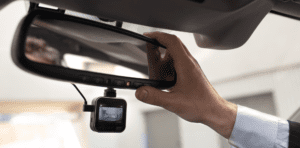Compare cheap car insurance
✔ Compare cheap car insurance quotes
✔ Over 110 insurance providers
✔ Get a quote in minutes
✔ Save up to £504*
If you notice that your car’s steering is pulling to one side, it’s understandable to feel concerned, as this can be unsafe. In our handy guide, we delve into the possible causes of this issue and offer solutions for rectifying it.
- Why is My Car Pulling to One Side?
- Wheel Alignment is Off
- Uneven Tyre Pressure
- Worn Tyres
- New Tyres
- Tyre Separation
- Wheels are Imbalanced
- Uneven Brakes
- Wheel Bearings
- Are there any other reasons my Car Steering is Pulling to One Side?
- Top Tips to Prevent Your Car Pulling to One Side
Why is My Car Pulling to One Side?
If your car is drifting to the right or left when you’re driving or braking, there could be several reasons behind it. It’s a matter of safety to address steering pull, so don’t overlook it.
Be sure to have your car inspected promptly. Our guide outlines some common causes for your car’s tendency to pull to one side and provides practical advice on how to resolve the issue.
How much can you save on your car insurance?
Wheel Alignment is Off
One prevalent cause for a car pulling to one side is incorrect wheel alignment. Proper alignment means your wheels are exactly parallel to the car’s axles, forming a perfect rectangle and pointing straight ahead.
This alignment is crucial for several reasons:
- Minimises tyre wear: Correct alignment reduces uneven wear on the tyres, extending their life.
- Enhances driving performance: It improves the vehicle’s handling, making the drive smoother and more controlled.
- Boosts fuel efficiency: Aligned wheels decrease resistance while driving, which can lead to better fuel economy.
- Decreases steering issues: It helps in preventing steering problems, contributing to a safer drive.
Common Culprits for Wheel Misalignment
Several factors can knock your wheels out of alignment, including:
- Pothole damage: The UK’s roads are notorious for potholes, especially after cold, wet weather. Hitting potholes can jolt the wheels out of alignment.
- Kerb impact: A strong impact with a kerb can damage tyres and affect wheel alignment.
- Speed bumps: Not slowing down sufficiently for speed bumps can jostle the alignment, and it might also harm the suspension system or result in a speeding fine.
How to Fix Wheel Alignment Problems
- Professional Alignment Check: If you’re not well-versed in car mechanics, the best course of action is to take your car to a garage for a wheel alignment check. Fortunately, this is usually a quick and cost-effective fix. Many service centres might even offer a complimentary initial check-up.
Remember, maintaining your car’s wheel alignment is not just about a smoother drive—it’s essential for your safety on the road.
How much can you save on your car insurance?
Uneven Tyre Pressure
Uneven tyre pressure is another common reason your car might be pulling away from a straight path. If one tyre is less inflated than the others, it can cause your car to lean and steer off course.
Key Steps to Correct Tyre Pressure
- Check tyre pressure: Compare the pressure in all tyres with the recommended levels.
- Adjust the pressure: Inflate the underinflated tyre(s) to match the rest.
How to Fix the Tyre Pressure
Self-Service at Petrol Stations: Rectifying this issue is straightforward:
- Locate a tyre air machine: These are readily available at most petrol stations.
- Find the recommended pressure: Look up the ideal tyre pressure for your vehicle either in the manufacturer’s handbook or on the B-pillar. The B-pillar is the post between your car’s front and rear doors.
- Adjust as necessary: Use the machine to inflate your tyres to the proper pressure.
By ensuring that all tyres are equally and correctly inflated, you not only prevent the car from pulling to one side but also improve the overall safety and fuel efficiency of your vehicle.
Regular checks and maintenance of tyre pressure are simple yet effective practices that can save you from potential hazards and expenses in the long run.
How much can you save on your car insurance?
Worn Tyres
Understanding Tyre Wear: Worn tyres can significantly affect your car’s steering, leading to it pulling to one side. Tyres should be rotated regularly to ensure even wear across all four.
If they’re not, you might find one tyre wearing down more quickly than the others, impacting the vehicle’s handling.
Key Considerations for Tyre Maintenance
- Regular rotation: This helps tyres wear uniformly, prolonging their usability.
- Monitoring wear: Keep an eye on the tread depth and overall condition of your tyres.
Best Practices for Replacing Tyres
Coordinated Tyre Replacement: When it’s time to replace a worn tyre:
- Replace in pairs: It is recommended to change both tyres on the same axle simultaneously to maintain balance.
- Match tyres: Ensure the new tyres are of the same brand and model to provide uniform tread patterns and rolling characteristics.
Why Matching Matters: Having identical tyres is crucial because:
- Tread patterns: Different tread designs can lead to variations in grip and handling.
- Rolling characteristics: Tyres from different manufacturers may perform differently, even if they’re the same size.
- Vehicle balance: Mismatched tyres can cause the car to pull to one side and may lead to further wear and tear.
Regularly checking your tyres for signs of wear and keeping them properly inflated will not only prevent your car from pulling to one side but also contribute to safer driving conditions and better fuel efficiency.
If you’re unsure about the condition of your tyres or how to rotate them, it’s best to consult with a professional mechanic.
How much can you save on your car insurance?
New Tyres
Identifying the Problem: After fitting new tyres, if your car starts to pull to the right or left, this could signal a manufacturing defect in one of the tyres.
Tyre conicity is a specific issue that arises when the steel belts beneath the tread are not aligned correctly. This misalignment can cause the rubber to set in a slightly conical shape, affecting the tyre’s performance.
Recognising Tyre Conicity
- Steering pull: Noticeable deviation in the car’s steering post new tyre installation.
- Uneven wear: Premature or uneven wear patterns may indicate conicity.
Resolving the Issue with Tyre Warranty
Warranty Claims:
- Immediate action: Tyre conicity usually becomes evident immediately after installation.
- Warranty cover: The tyre warranty should ideally cover a no-cost replacement.
Steps to Take:
- Check your warranty: Confirm that tyre conicity is included under the warranty terms.
- Contact the supplier: Report the issue to the tyre supplier or the garage that fitted the tyres.
- Arrange for inspection: Have a professional evaluate the tyre to confirm the defect.
- Seek replacement: If tyre conicity is confirmed, the warranty should facilitate a free replacement tyre.
It’s important to address any issues with new tyres straight away, as they can affect not just the car’s alignment, but also its overall handling and safety.
If you’re unsure about the process or the warranty conditions, don’t hesitate to ask the tyre provider for assistance.
How much can you save on your car insurance?
Tyre Separation
Spotting Tyre Separation: If you’re experiencing a shaking wheel or steering wheel at low speeds, it may be due to tyre separation. This serious issue occurs when one of the tyre’s layers detaches from the others.
Potential Causes of Tyre Separation
- Manufacturing defects: Flaws in the production process can lead to premature separation.
- Incorrect tyre pressure: Tyres not inflated to the correct levels can suffer stress leading to separation.
- Excess weight: Overloading your tyres can cause significant strain.
- High temperatures: Aggressive driving at high speeds or in extreme heat can overheat tyres, contributing to separation.
- Aging and wear: Older tyres, or those that haven’t been maintained, are more prone to separation.
- Road damage: Encountering potholes or sharp impacts with curbs can start the separation process.
Understanding the Dangers of Tyre Separation
- Blowouts: A separated tyre can burst, posing a critical risk while driving.
- Loss of control: Tyre issues can lead to an inability to steer properly, which is particularly hazardous at high speeds.
Immediate Actions to Take
- Mechanic visit: If you detect any shaking in the wheels or steering, head to a mechanic without delay.
- Inspection: Have a professional thoroughly inspect your tyres for signs of separation or other issues.
- Replacement: If tyre separation is confirmed, replace the affected tyre immediately to ensure your safety on the road.
Do not ignore the signs of tyre separation, as they can lead to severe accidents. Regular tyre checks and maintenance are crucial to prevent such occurrences and to keep your vehicle safe and roadworthy.
How much can you save on your car insurance?
Wheels are Imbalanced
Signs of Imbalance: If your car is pulling to one side, it might be due to imbalanced wheels. This can be noticeable through vibrations or a wobbling sensation in the wheel and steering wheel.
Causes of Wheel Imbalance
- Non-uniform tyres: Tyres that aren’t perfectly round can lead to imbalance.
- Lost balancing weights: The small weights affixed to the wheel rim can sometimes fall off, disrupting the balance.
Consequences of Imbalanced Wheels
- Vibrations: You may feel shaking through the steering wheel, particularly at certain speeds.
- Uneven wear: Imbalanced wheels can lead to irregular tyre wear.
- Steering difficulty: It can make steering more challenging and less responsive.
- Safety risks: Imbalance in wheels can escalate into more serious issues if not addressed.
Maintaining Wheel Balance
- Regular service: Include tyre balancing as part of your routine car service.
- Periodic checks: Even if there’s no noticeable issue, have your wheel balance checked periodically.
- Immediate attention: Should you notice any vibrations, have your car inspected immediately.
Correcting the Wheel Imbalance
- Professional assessment: A mechanic can assess and correct wheel imbalance with precision tools.
- Balancing weights: They can replace any lost weights and ensure even distribution across the wheel.
- Follow-up: After service, ensure there are no residual vibrations or pulling to one side.
Keeping your wheels balanced is integral to your car’s overall performance and safety. It’s not just about a smoother ride; it’s also about ensuring that you don’t face unexpected and potentially dangerous situations while driving.
You should have your wheels checked as part of your car servicing.
How much can you save on your car insurance?
Uneven Brakes
Identifying Brake Issues: A car that pulls to one side during braking is often experiencing uneven braking. This is a clear indicator that something is amiss within the braking system.
Common Causes of Uneven Braking
- Stuck caliper: This can cause one brake to engage more forcefully than the other.
- Symptoms: Listen for a grinding noise which suggests a caliper may be sticking.
- Clogged brake hose: This hose distributes brake fluid to the brakes, and if clogged, can disrupt even braking.
- Symptoms: A pulling sensation during braking may point to a blockage.
The Role of Calipers and Brake Hoses
- Calipers: Act like clamps to press the brake pads against the rotors, slowing the car down.
- Brake hoses: These hoses are critical for delivering brake fluid to the brake calipers.
Safety and Repair
- Immediate attention: Any unusual signs, especially related to brakes, should be inspected by a mechanic without delay.
- Professional check-up: A mechanic can provide a thorough assessment and address issues such as replacing or repairing a stuck caliper or clearing a clogged brake hose.
Ensuring Braking System Health
- Regular maintenance: Stick to a routine service schedule to prevent issues before they arise.
- Prompt repairs: Addressing brake problems early can prevent more serious damage and ensure your safety on the road.
The braking system is critical to your car’s safety performance. Any signs of malfunction, particularly if your car is pulling to one side when braking, should be taken seriously and checked by a professional mechanic immediately.
Regular checks and maintenance can help prevent these issues and keep your car running safely and efficiently.
How much can you save on your car insurance?
Wheel Bearings
Recognising Wheel Bearing Problems: Should you hear grinding noises or notice your steering wheel wobbling or shaking, especially during turns, the wheel bearings may be at fault.
Understanding Wheel Bearings: Wheel bearings are crucial components that allow your car’s wheels to spin freely with minimal friction. They are designed to last for a long time, but they do wear down eventually or may get damaged.
Symptoms of Faulty Wheel Bearings
- Grinding or growling noises: These sounds may become more pronounced as the vehicle accelerates.
- Vibrations in the steering wheel: Often felt when the vehicle is in motion and may increase with the vehicle’s speed.
- Pulling to one side: Can occur if one bearing is worn more than the other, affecting the car’s alignment.
Addressing Wheel Bearing Issues
- Seek professional help: It’s advisable to consult with a mechanic for a proper diagnosis.
- Timely repair: Prompt attention to bearing issues is essential for safe driving.
- Safety check: Ensure a complete safety inspection is done to rule out any related issues.
Fixing the Problem
- Mechanic intervention: Replacing wheel bearings is a straightforward task for an experienced mechanic.
- Urgent action: Don’t delay in getting this fixed, as driving with a bad bearing can lead to further vehicle damage and safety risks.
Wheel bearings are vital for smooth and safe driving. If you suspect an issue, it’s crucial to have your car checked by a mechanic promptly to avoid more significant problems and to ensure your car remains safe to drive.
Regular car maintenance can often catch such issues before they lead to noticeable symptoms.
How much can you save on your car insurance?
Are there any other reasons my Car Steering is Pulling to One Side?
Beyond the Usual Suspects: Alternative Causes
When wheel alignment, tyres, and brakes have been ruled out, there are still several factors to consider:
Sloping Roads
- Natural road camber: Roads often have a slight incline to facilitate drainage.
- Effect on steering: This can cause the car to drift slightly to one side, typically towards the kerb.
Wear and Tear on Car Parts
- Steering and suspension: Worn components in these systems can affect vehicle handling.
- Need for inspection: A comprehensive check by a mechanic is necessary to pinpoint the problem.
Annual Maintenance
- MOT check: During the car’s annual MOT, the mechanic will assess for any issues that could cause pulling.
- Routine servicing: Regular servicing can identify and rectify wear before it leads to steering issues.
Torque Steer in High-Performance Cars
- Acceleration impact: Front-wheel-drive performance cars may pull to one side during acceleration due to torque steer.
- Countermeasures: Newer models often have design features to mitigate this.
- Driving tip: Gentle acceleration can reduce the effects of torque steer.
Interesting Fact
- Road design: It’s interesting to note that roads are intentionally designed with a gradient to ensure efficient water runoff.
Persistent pulling to one side requires professional attention to ensure safety and maintain the car’s performance. It’s crucial to consider these less obvious causes if your car consistently exhibits this behaviour.
How much can you save on your car insurance?
Top Tips to Prevent Your Car Pulling to One Side
Encountering steering pull can be disconcerting and potentially hazardous. It’s essential to address any steering issues promptly by visiting a mechanic. However, some proactive measures can help avoid this problem altogether.
Regular Car Servicing
- Ensure consistent servicing to catch and fix any issues early, which also helps in reducing the likelihood of breakdowns.
Tyre Maintenance
- Perform frequent checks on tyre pressure and overall condition to maintain safety and roadworthiness.
- Tread Depth Check: In the UK, the legal minimum tyre tread depth is 1.6mm across the central three-quarters of the tyre. Use a 20p coin to check; if the outer band of the coin is visible, the tyre needs replacing.
Driving Habits
- Drive cautiously to navigate potholes and bumpy roads gently, protecting your car’s steering and suspension.
- In adverse weather conditions, such as ice or heavy rain, take additional precautions. A wheel alignment check can be particularly beneficial before winter or long journeys.
Breakdown Cover
- Consider breakdown cover for assurance that, in the event of a car failure, you have ready access to professional assistance.
Taking these steps can not only contribute to a smoother driving experience but also safeguard your vehicle’s integrity and ensure your safety on the road.










